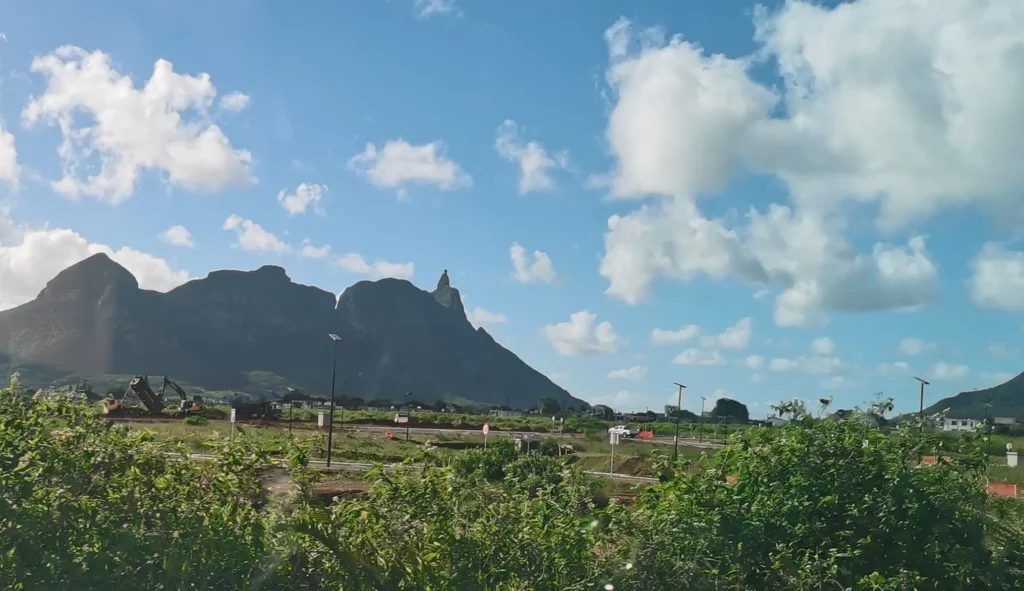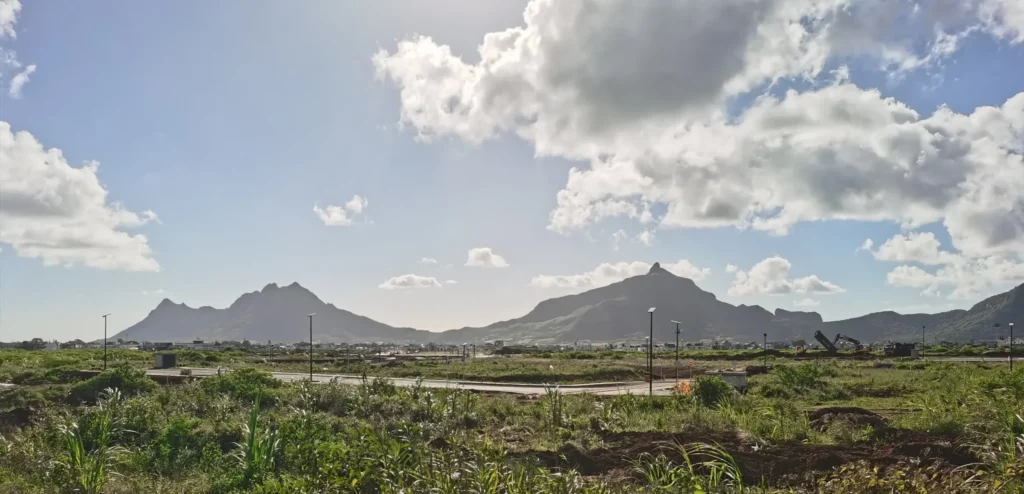Project Overview
Project location: A major road in Mauritius
Product applied: Sresky SSL-96 solar street lights
Number installed: 166 units
Installation height: 7 meters, spacing approximately 27 meters
With the global focus on clean energy and sustainable development intensifying, Mauritius—a tropical island nation in the Indian Ocean—is actively promoting the development of green infrastructure. Among these initiatives, the road lighting upgrade project has become a key component of the country’s sustainability strategy. To address challenges such as insufficient grid coverage in remote areas, high electricity costs, and environmental pressures, the project adopted Sresky SSL-96 solar street lights to deliver a clean lighting solution featuring high brightness, long battery life, and intelligent energy-saving capabilities.
1. Project Background and Needs Analysis
Mauritius benefits from excellent solar conditions, with thousands of hours of annual sunshine. However, its conventional power grid infrastructure remains insufficient in remote regions and newly developed areas. Heavy dependence on fossil fuel-based power generation results in high operational costs and undermines the country’s green economic goals. In response, this road project launched a lighting upgrade to provide an efficient, eco-friendly, and self-sufficient lighting solution.
Key Challenges
-
High energy costs: Grid-powered streetlights result in significant electricity expenditures, increasing pressure on the national energy budget.
-
Limited grid coverage: Extending power infrastructure to remote or newly built roads is costly and sometimes technically unfeasible.
-
Environmental pressure: Carbon emissions from fossil fuels contradict Mauritius’ goals for low-carbon development.
-
Nighttime safety risks: Poor lighting elevates the risk of traffic accidents, impacting both mobility and quality of life.
To overcome these challenges, the project needed a reliable streetlight solution that could harness the island’s abundant solar resources, reduce operating costs, and improve safety. The Sresky SSL-96 emerged as the ideal product for this task.
2. Technical Solution Design
Tailored to Mauritius’ specific environmental conditions and infrastructure needs, the project team selected the Sresky SSL-96 and implemented a customized design to ensure high performance in the tropical climate.
2.1 Sresky SSL-96 Solar Street Light: Features and Advantages
The Sresky SSL-96 offers a powerful combination of performance and durability. Its core advantages include:
-
High-brightness output: Delivers 8,000 lumens, ensuring road visibility at night and greatly enhancing safety for drivers and pedestrians.
-
Efficient solar conversion: Equipped with monocrystalline silicon solar panels with over 21% efficiency, fully utilizing Mauritius’ solar resources.
-
Long-life battery: Uses lithium-ion batteries combined with TCS (temperature control system) technology, ensuring stable operation in extreme temperatures (-10°C to 60°C) and extended battery life.
-
Smart lighting modes: Supports PIR sensing mode (e.g., M1: 30% brightness until dawn) and timer + PIR hybrid mode (e.g., M2: 100% brightness for 5 hours + 25% brightness with PIR for 5 hours + 70% until dawn), achieving energy-efficient, demand-based lighting.
-
ALS2.4 patented technology: Guarantees over 5 days of continuous lighting during extended rainy periods, enhancing adaptability to the tropical climate.
-
Durable and robust: Integrated aluminum housing, IP65 waterproof and IK08 impact ratings, hurricane resistance—ideal for long-term outdoor use.
-
Quick ODM service: Supports small-batch customization for specific project needs.
These advantages make the SSL-96 not only suitable for local environmental and energy conditions but also a long-term, dependable lighting solution for public infrastructure.
2.2 Project-Specific Parameters and Configuration
-
Streetlight model: Sresky SSL-96
-
Units installed: 166
-
Recommended spacing: 27 meters for 6-meter poles; installed at 7 meters height to ensure broader and more uniform coverage
Through detailed planning and optimized parameters, the project successfully balanced cost efficiency and lighting performance.
3. Project Implementation and Execution
The implementation process adhered strictly to Sresky’s installation guidelines to ensure safe and efficient deployment at every stage.
Implementation Steps
-
Foundation construction: Dig foundation pits and use C20-grade concrete to secure base cages for pole stability.
-
Bracket and fixture assembly: Attach fixtures to brackets using bolts for streamlined assembly.
-
Luminaire mounting: Install assembled fixtures on poles with proper alignment and stability.
-
Pole hoisting and fixing: Manually or mechanically hoist poles, align with base, and fasten securely.
-
System testing: Perform full functional testing to verify lighting modes and battery performance.
4. Project Outcomes and Impact
Upon completion, the project delivered substantial benefits across social, economic, and environmental dimensions.
4.1 Social Benefits
-
Enhanced road safety: Reliable lighting significantly reduces nighttime traffic accidents, improving pedestrian and vehicle safety.
-
Improved quality of life: Supports safe nighttime travel, encourages local commerce, and elevates living standards.
-
Model for replication: Demonstrates a successful application of solar lighting for other regions in Mauritius.
4.2 Economic Benefits
-
Reduced energy costs: Solar power eliminates grid electricity use, greatly lowering long-term operational expenses.
-
Lower maintenance costs: Smart alarm functions simplify maintenance and reduce labor costs.
-
Job creation: Local installation and maintenance needs supported employment and technical skill development.
4.3 Environmental Benefits
-
Reduced carbon emissions: A zero-emissions solution that contributes to climate action and ecosystem protection.
-
Improved energy independence: Less reliance on fossil fuels strengthens national energy resilience.
-
Support for sustainable goals: Aligns with UN Sustainable Development Goals (SDGs) and national green infrastructure strategies.
5. Summary
The successful implementation of the Mauritius Road Lighting Upgrade Project highlights the superior performance, reliability, and adaptability of the Sresky SSL-96 solar streetlights. This project not only addressed the local need for efficient, clean lighting but also set a benchmark for sustainable infrastructure development—demonstrating tangible benefits in energy savings, environmental protection, and community well-being.


